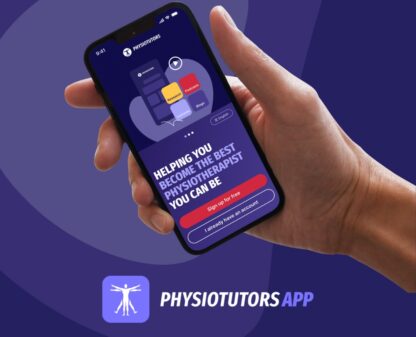Anterior Disc Displacement

Body Chart

Jaw, TMJ, Temporal area, area around the ear
Background Information
Patient Profile
- Female > Male
- All ages
- 15-20% of all relapsing headaches are cervicogenic
Pathophysiology
Trigger
- Prolonged opening of the mouth (e.g. at the dentist)
- Jaw trauma
- High levels of stress, anxiety6
- Parafunction of the TMJ
- Idiopathic
Etiology
Differentiation in:
- Disc displacement with reduction
- Disc displacement with reduction with intermittent locking
- Disc displacement without reduction with limited opening
- Disc displacement without eduction without limited opening
Pain Mechanisms
- Mechanical nociceptive: Movement dependent, direction specific limitation, on/off characteristic, localized pain
- Affective dimension: Fear and helplessness due to acute “jaw lock”
- Motor output: Change in muscle tone and movement
Course
No difference between surgical and conservative management; Good prognosis for early intervention, especially in young people; Treatment duration: 2-3 series4; 2-3 weeks in combination with NSAIDs
History & Physical Examination
History
May be familiar with the condition, history of crepitations in TMJ, repeatedly hit on jaw (sports, hobby, fracture, WAD), chewing hard food, RA, meningitis
At present: sounds from TMJ in the past 30 days, experienced locking, had a dentist appointment where mouth had to be open for a long time
- Local, partially referred pain
- Locking, movement restriction (opening mouth)
- Makes sounds/crepitation
- Typically unilateral
- Concordant head- or neck pain likely
- Associated symptoms: Headache, facial pain, ear pain, toothache, trouble swallowing
Physical Examination
Inspection & Palpation
Swelling in TMJ; Protective positioning of jaw (facial asymmetry); overjet/overbite; tooth abrasion; tongue; adjacent muscle hypertonicity; articular effusion palpable
Active Examination
- Opening mouth actively limited
- Crepitation while opening/closing
- Opening mouth through deviations/shifts
- Limited depression: Norm 50-60mm
- Laterotrusion altered: norm 10-20mm: l/r difference <3mm;
- Relation DE/LT 4:1
- Protraction: norm 5mm
- Retraction: norm 3-4mm
Functional Assessment
Opening mouth is impaired in case of “lock”; correct pronunciation impaired
Special Testing
Compression Test: In this test, the patient bites hard on a wooden spatula placed between the teeth in the molar region on one side in order to physically compress intraarticular structures, especially on the contralateral side
Neurological
No abnormal findings
Passive Examination
Assisted opening of the mouth with passive stretch is limited in case of a “lock”; passive ROM of TMJ limited for opening and lateral movement
Differential Diagnosis
- Arthritis
- Anterior disc displacement with reduction
- Osteochondrosis dissecans
- Adhesions
- TMJ (sub-) luxation
- Fracture
- Aplasia
- Osteonecrosis
- Myofascial pain
- Spasm
- Tendinitis
- Headache
Treatment
Strategy
NSAIDs, Patient education, MT, Self-management with exercises
Interventions
- NSAIDs during acute phase to reduce inflammation
- Patient has to understand trigger and source of pain to understand their situation and treatment strategy; Reduce fear
- MT: Early manipulation and mobilization to relief the TMJ and possible reduction of the disc; translation movement, medial, lateral, and anterior glide; mobilization of the upper C-Spine
- Active therapy/Self-management:
- Motor control
- Muscle techniques: muscle relaxation, decrease tone of jaw muscles
- Habit reversal techniques
References
- Al-Baghdadi, M., Durham, J., Araujo-Soares, V., Robalino, S., Errington, L., Steele, J. (2014). TMJ Disc Displacement without Reduction Management: A Systematic Review. J Dent Res, 93(7 suppl), 37S-51S. doi:10.1177/0022034514528333
- Liu, F., & Steinkeler, A. (2013). Epidemiology, diagnosis, and treatment of temporomandibular disorders. Dent Clin North Am, 57(3), 465-479. doi:10.1016/j.cden.2013.04.006
- Manfredini, D. (2014). No significant differences between conservative interventions and surgical interventions for TMJ disc displacement without reduction. Evid Based Dent, 15(3), 90-91. doi:10.1038/sj.ebd.6401049
- Muhtarogullari, M., Avci, M., & Yuzugullu, B. (2014). Efficiency of pivot splints as jaw exercise apparatus in combination with stabilization splints in anterior disc displacement without reduction: a retrospective study. Head Face Med, 10, 42. doi:10.1186/1746-160X- 10-42
- Peck, C. C., Goulet, J. P., Lobbezoo, F., Schiffman, E. L., Alstergren, P., Anderson, G. C., List, T. (2014). Expanding the taxonomy of the diagnostic criteria for temporomandibular disorders. J Oral Rehabil, 41(1), 2-23. doi:10.1111/joor.12132
- Reissmann, D. R., John, M. T., Seedorf, H., Doering, S., & Schierz, O. (2014). Temporomandibular disorder pain is related to the general disposition to be anxious. J Oral Facial Pain Headache, 28(4), 322-330.
- Shaffer, S. M., Brismée, J. M., Sizer, P. S., & Courtney, C. A. (2014). Temporomandibular disorders. Part 1: anatomy and examination/diagnosis. J Man Manip Ther, 22(1), 2-12. doi:10.1179/2042618613Y.0000000060
- Wahlund, K. (2003). Temporomandibular disorders in adolescents. Epidemiological and methodological studies and a randomized controlled trial. Swed Dent J Suppl(164), inside front cover, 2-64.
- Yuasa, H., Kurita, K., & Treatment Group on Temporomandibular, D. (2001). Randomized clinical trial of primary treatment for temporomandibular joint disk displacement without reduction and without osseous changes: a combination of NSAIDs and mouth-opening exercise versus no treatment. Oral Surg Oral Med Oral Pathol Oral Radiol Endod, 91(6), 671-675. doi:10.1067/moe.2001.114005


